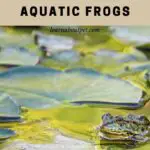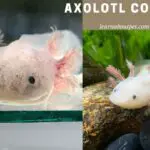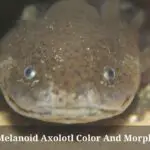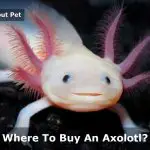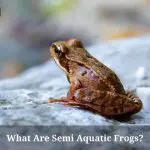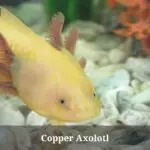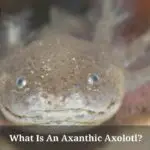Day by day axolotls are becoming extinct in the wild because they lack habitat and several other factors. However, more and more aquatic pet owners want to take care of axolotl as a pet, and some are practicing breeding to increase the population or for research purposes. If you already know all the axolotl morphs or their colors, have you ever heard of the eyeless variant of axolotl?
Is eyeless axolotl real? The eyeless mutant in Mexican axolotl comes from gene e which prevents optic vesicles from forming. Axolotls can also be eyeless due to abnormal eye development. The eyeless mutant embryo was first seen by Dr. R. R. Humphrey from Winstar stock axolotls. Now, any axolotl born from the e/e gene will never develop eyes.
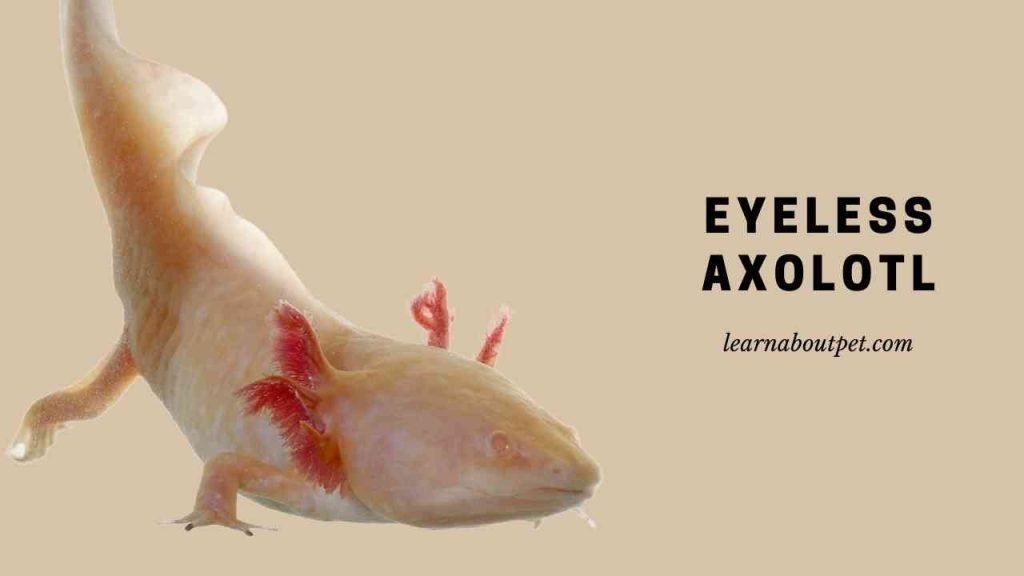
Studying an axolotl that has no eyes is fascinating. So far, we only know axolotls with both eyes and their smiley faces. Let’s read in detail about the axolotl with this particular gene.
Do Axolotls Have Eyes?
The axolotl has eyes located above its mouth and nose. It has several types of eyes with different colors, which are gray, lighter yellow-green, black, pink, or white.
If you look at the axolotl eye close up, you will notice that the axolotl does not have eyelids. They have poor eyesight and cannot stand too bright light.
Try to put the axolotl tank in a place that is not exposed to direct sunlight or a room that is too bright. Darker areas will be more suitable for axolotls who are sensitive to light.
Are Axolotls Blind?
Normal axolotls are not blind. They have poor eyesight. Unlike the eyeless axolotl, which will be blind. There are aquatic pet owners who have axolotls with no eyes, and they have to guide the axolotls every time they eat because they can only sense their food through its smell.
Axolotl enthusiasts who have more than one axolotl will choose to treat whatever type and axolotl’s condition. As long as they can provide whatever the axolotl needs, they as a pet can live according to their life expectancy.
How Rare Is The Eyeless Axolotl?
Eyeless Axolotls are rare because it is the influence of genes. We will not know if we do not observe some of the previous mating for the birth of the eyeless one. The mutation arose spontaneously, and no one can control what gene will come out of the reproduced axolotl.
Some call the olm an eyeless axolotl cousin because it is a salamander whose body shape is similar to that of an axolotl.
Is Eyeless Axolotl Healthy?
The eyeless axolotl can be as healthy as any other axolotl, and it’s highly pigmented. When compared with normal axolotls, they have much more pigment. But their body functions are the same as normal. There is no significant difference except for the eyes.
If you have an axolotl with a disability, you need to put it in the tank alone. If there are other axolotls placed in the same tank, the normal axolotls can become the target of the eyeless because they will be aggressive.
Many still feel sorry for the condition of the axolotl being born without eyes. But some choose to give the axolotl to a larger predator as prey. If you are interested in having one, look for an eyeless axolotl for sale or order from a trusted breeder.

Can An Axolotl Regrow Its Eyes?
Axolotls who were born without eyes cannot regrow their eyes because they were not there from the start. Regeneration is possible even if the ability isn’t perfect.
The axolotl’s eye is a delicate organ. After growing back, it is possible that the axolotl’s vision is not as sharp as usual. Even though from normal conditions the axolotl’s vision is not good.
If the axolotl’s eye condition is severe, the regeneration process takes a long time, and the lens may not regenerate properly.
Many variables determine whether or not an axolotl can grow its eyes back to normal and can be seen from the vascularisation, anatomical eye damaged area, any infection, and extent of the injury.
Is Axolotl Still Alive?
The eyeless axolotl can live normally. They must be guided while eating. You can’t expect axolotls to eat the food you give them unless they smell it up close. You can help the axolotl by injecting food or using a spoon to direct it into the axolotl’s mouth.
Their way of life is the same even though the axolotl has no eyes. They still have the same regeneration abilities, behavior, and temperament as normal axolotls. It’s just that you can’t put any tank mates near the eyeless because it will be dangerous for other fish.
How To Take Care Eyeless Axolotl?
Caring for an eyeless axolotl is no different from caring for any axolotl you know. Several conditions such as water conditions, tank space, water temperature, and proper diet must be met to have axolotls that live according to their life expectancy.
The table below is some of the requirements to care for an axolotl.
| Axolotl Requirements | Explanation |
| Set up the tank | A single axolotl needs about 10-gallons to be able to swim freely. |
| Install a filter | A good filter will keep the water condition clean and healthy. |
| Provide substrate | Choose a substrate that is safe for the axolotl. Do not put gravel that can be swallowed by the axolotl because it can be a choking hazard. |
| Minimal lighting | Axolotls are sensitive to light. Give a minimal light, not too bright and not too dark. |
| Suitable temperature | Axolotls will cool down at temperatures between 16-18° Celsius. |
Special Care Needed For Axolotl With No Eyes
Not many people choose to continue caring for the eyeless axolotl due to several conditions. One of them is that they are smaller than usual because they cannot see food properly. But the birth defect has its advantages, such as understanding their surroundings well even without eyes.
You need to pick an eyeless axolotl name and give him life as happily as possible. Do not change the environment in the tank too often. It will help them to get used to their habitat without being shocked by the changes. Always help them when eating, so that the axolotl has an ideal body weight.
Eyeless Axolotl Care Advice
Many axolotl enthusiasts treat axolotl based on axolotl eye color. But if you have an eyeless one, don’t discriminate against them because they too have the right to live. Treat them as you would a usual axolotl.
How rare is the eyeless axolotl? We can’t be sure how often the eyeless one can be born, but there is a gene e influence that makes the axolotl born with an eyeless condition.
Never forget or miss the axolotl’s feeding schedule because they can’t see the food you give them directly. Help axolotl to eat in proportion, but do not overfeed. Healthy or not axolotl with no eyes depends on how patient and careful you take care of it.
Eyeless Axolotl Minecraft
The existence of eyeless axolotls in the real world makes creators want to use mob skins in the Minecraft game to make eyeless axolotls. The mob skin can be seen from MediaAzure the Cat if you want to see a complete photo of brown eyeless.
Final Verdict – Eyeless Axolotl
Eyeless axolotl can be present because of gene e in Mexican axolotl, which prevents the optic vesicles from forming. This type of axolotl will have more pigment than the others. Even though they live without eyes, this axolotl is no different from the others in terms of food, habitat, or other water requirements.

Giving them the same chance to live as axolotls, in general, is the duty of axolotl owners, considering they are endangered animals. Whatever their condition, whether they have eyes or not, it’s your job to give them a good life.
As a pet lover, make sure to learn about pet more and give your pet axolotl a good and comfortable life!

Welcome to Learn About Pet. My name is Rajkumar Ravichandran and I love all pets, travel, and amazing food. I write about my passion and personal experience caring for multiple pets in this blog! ❤️
Post Disclaimer
DISCLAIMER: THIS BLOG OR WEBSITE, "Learn About Pet", DOES NOT PROVIDE YOU WITH MEDICAL ADVICE AND IS NOT A SUBSTITUTE FOR MEDICAL ADVICE. ALWAYS GET IN TOUCH WITH YOUR PERSONAL VETERINARIAN AND USE INFORMATION HERE AS GENERAL ADVICE.
The information, including but not limited to, text, graphics, images and other material contained on this website are for informational purposes only. No material on this site is intended to be a substitute for professional veterinary advice, food recommendation, diagnosis, or treatment. Always seek the advice of your veterinarian or other qualified health care provider with any questions you may have regarding a medical condition or for pet food related questions.
